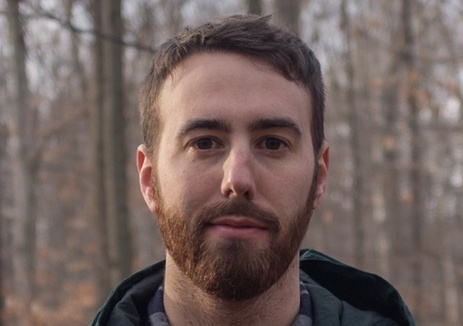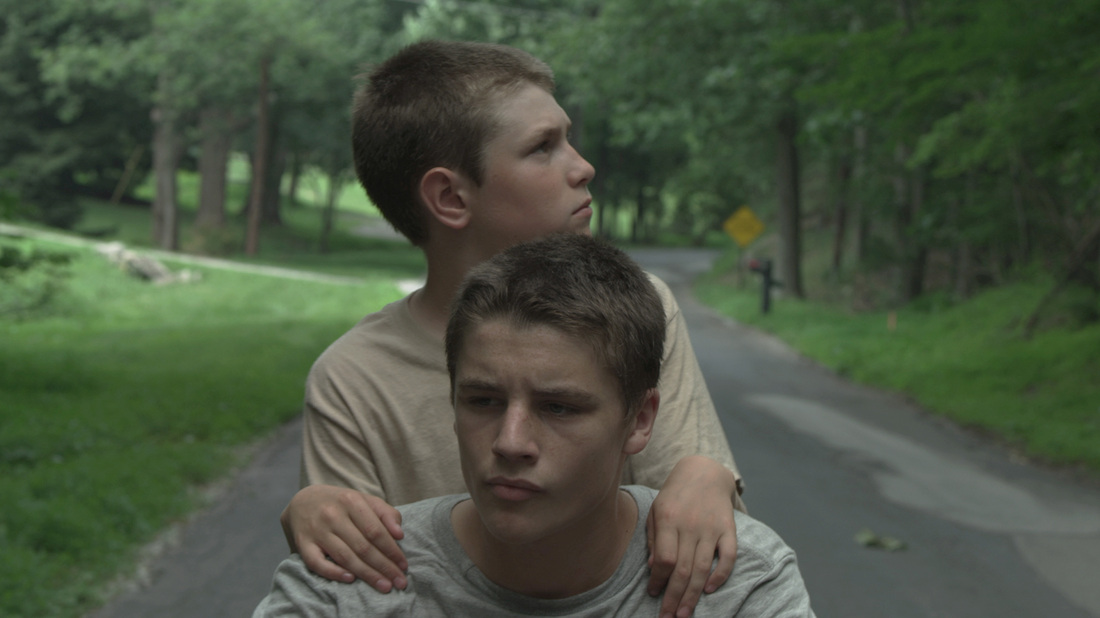Brandon's full review will be posted on Friday, but the film is available now on VOD (iTunes, Amazon, and your local cable provider).
Brandon Isaacson: You’ve said “The intent of Hide Your Smiling Faces is to explore not the moments that we are remembered by, but the moments we remember…” which I felt you absolutely accomplished. That is a really, really difficult exploration to embark upon for your first film, especially since you do so using more emotional logic than narrative logic. Were you fearful that you wouldn’t be able to accomplish this? Or was confidence the only option?
Daniel Patrick Carbone: To make the kind of film I wanted to make, it really felt like the only option. I wanted to explore the darker side of what forces young people to suddenly feel the pressure of responsibility – to suddenly have to grow up. I wanted to put my own spin on a very popular genre – on filled with images of boys chasing girls, or playing sports, or any other more common subject matter dealing with adolescent boys. A lot of films are about the lead up to some massive life lesson or epiphany. By structuring the film as a series of formative moments - all in some way relating to brotherhood, death, loss, or discovery - my hope was to show that the seemingly small moments in our lives are just as important as the more obvious ones. It was all about the details - placing two moments next to each other in the narrative and allowing one to provide context for the other. I wasn’t interested seeing how someone moved from point A to point B, or to fully explain the reasons or ramifications of each action. The film is entirely from the perspective of these two boys as they deal with difficult emotions for the first time and begin to see the world and their relationships in a new light. If a scene wouldn’t be important to these boys in the moment, then it didn’t belong in this film.
Of course there were times when I worried this structure could be alienating, but to be honest I was never really making this film for anyone else. It was a personal story and a personal test for myself. I believed that if I stayed true to my own vision for the film and my own experiences as a child, there would be at least a small group of people with a similar experience who would respond. The positive response has been truly overwhelming, but I think that speaks to an audience’s desire to be an active part of the experience. To have emotion, rather than plot, move them through the film. To not have every detail spelled out to them and to have moments of ambiguity for them to fill in themselves. That is what I look for in a film so I was hoping others would feel the same. But sure, at times it was terrifying. The good thing for me was that I didn’t have any investors or producers to pay back so the risk was entirely on me, and I can deal with that.
BI: To play off that last question, is there a small moment from the process of making and releasing this film that sticks with you? One of those somewhat irrelevant but powerful small experiences that you explore in the film? It doesn’t have to have any relevance to the film or distribution, I’m just curious if there’s been a random but notable special time with a rain droplet or a croissant or an interaction with someone. Perhaps something you’ll look back upon in a different film 10 years from now.
DPC: The opening shot in the film was not something we planned. I knew that I wanted to start the film with an image of nature or wildlife, but I didn’t actually have a specific plan when we started shooting. We were always out in the woods so I was just hoping a deer or bird would walk by and we could steal a shot of it. When we found that snake on the riverbank, struggling to devour a fish whole, we stopped everything we were doing. It was beyond anything I could have ever set up. It was like mother nature knew we needed something special. I think aside from being an arresting image - sort of beautiful and disturbing at the same time - it also speaks to a lot of the themes in the film. It was just perfect. I’ll remember that moment every time I make a new film. Sometimes the most meaningful parts of a project will be the ones you could never plan on.
BI: I’m curious to hear more about how the business of the film impacted its creation. Why did you go to Kickstarter to help with production costs? How did that impact the shoot and support for the film?
DPC: The business of film wasn’t really something I was conscious of while making this film. I just didn’t know anything about it, but I think that was a positive thing. Aside from the fact that I had to fund the film primarily with my own money, I didn’t have any of the baggage of making a “sellable” film. I think if I knew then want I know now, the film would be very different, and ironically, would likely not have been as successful. My first real education about with “the business of film” came at the IFP Labs. It’s a program in NYC that helps first time filmmakers get their film finished and out into the world. What’s great about the program is that you enter into it after already having shot the film. Its not about how to make a film that will sell, its about taking the film you’ve already made and figuring out the best way to introduce it to the audiences. Just because a film isn’t “commercial” in the traditional sense, doesn’t mean there isn’t an audience for it, or that a distributor won’t be interested. Its just about navigating the business the way that is smartest for whatever type of film you’ve made.
Kickstarter was used as a means to raise a bit of money, but more importantly to introduce the film to a network family and friends. They provided a solid base of fans that we could rely on to support the film throughout it’s life and help spread the word wider when that time came. The money was of course very helpful, but it was only a fraction of the final budget. I think crowdsourcing is even more useful for building and audience than it is for fundraising.
Brandon Isaacson: The first film that came to mind when Hide Your Smiling Faces began was The Kings of Summer, and it does have some similar subject matter. However, it didn’t take long to realize that your style is very different from Vogt-Roberts. This film is far more calm, spiritual and balletic. It reminded me of Weerasethakul’s Uncle Boonmee Who Can Recall His Past Lives or Porterfield’s Putty Hill. What films inspired you, in terms of content and style?
Daniel Patrick Carbone: Some of the more obvious references for this film are the debut coming-of-age films by some of my favorite directors; Lynne Ramsey’s Ratcatcher, David Gordon Green’s George Washington, Tarkovsky’s Ivan’s Childhood just to name a few. I definitely wanted to take a more serious look at the moments in our young lives that help define us, and wanted to spend every possible moment dealing with the themes at hand, rather than focusing on a traditional narrative. How relationships change after a tragedy, how we all grieve differently, how we find our place in the world and how nature factors into all of that. I wanted to explore very big ideas by way of a very small story. This script began as a series of personal memories. That idea of a “remembered childhood” guided the entire writing process as well as the final structure of the finished film. I’m inspired by filmmakers that value atmosphere and tone as much as character and plot. Another Tarkovsky film, STALKER, has a perfect blend of content and style. My cinematographer Nick Bentgen and I spent a lot of time discussing that film. I’m hypnotized by it. I’m inspired by the way it makes me feel.
BI: Hopefully my last question is a fun one to answer! Since we’re a film club that focuses on watching rather than producing films, I must ask…what are some of your favorite films? Or perhaps off the beaten path choices that you recommend?
DPC: This is tough. I’m one of those people whose “favorite film” changes depending on the mood I’m in or project I’m working on. I try to see as much as I can and love all sorts of films. Here are just a few, but ask me tomorrow and the list might be different.
Revanche (2008), Gotz Spielmann
Barry Lyndon (1975), Stanley Kubrick
Wild at Heart (1990), David Lynch
Come and See (1985), Elem Klimov
Old Joy (2006), Kelly Reichardt
The Saddest Music in the World (2003), Guy Maddin
Dogtooth (2009), Giorgos Lanthimos
Breaking the Waves (1996), Lars Von Trier
Aguirre: The Wrath of God (1972), Werner Herzog
Blade Runner (1982), Ridley Scott
Wild Strawberries (1957), Ingmar Bergman
Mr. Death (1999), Errol Morris
Cache (2005), Michael Haneke
Underground (1995), Emir Kusturica
Primer (2004), Shane Carruth
Other interviews worth checking out include Indiewire's Tribeca coverage, Carbone's life in 10 films via The Playlist, and a video interview with RCN TV.


 RSS Feed
RSS Feed
